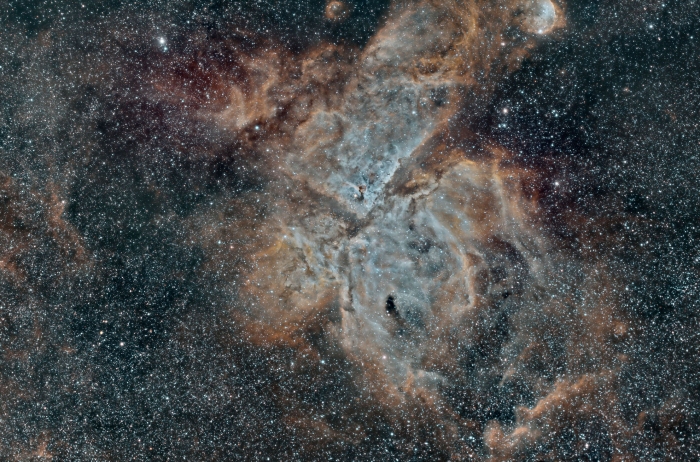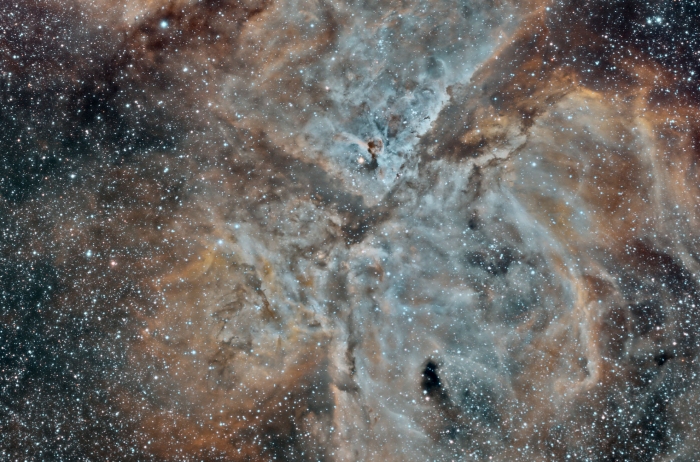I’ve posted before about my exploits in using remote telescopes on the Light Buckets system from France, but I have recently been using the iTelescope network of telescopes which have observatories in New Mexico USA, Spain and also down-under in Siding Spring, Australia. The Australian setup, which is in New South Wales, is located at a latitude of about 31 degrees South, and allows access to those magnificent objects in the Southern sky that I have dreamed of imaging for a long time.
The Eta Carina Nebula is a huge, bright nebula that is roughly 4 times the angular size of the Orion nebula, but is imaged much less due to its southerly latitude (also, the Orion Nebula is perhaps the most imaged object in the night sky). The nebula is some 7500 light-years from Earth and hosts some of the most massive and luminous stars in our Galaxy, including the double-star system Eta Carinae, which weighs in at over 100 times the mass of our Sun.
The particular telescope I used has a very wide field of view and the full Moon would fit across this image nearly 8 times. To see the full-sized 3960 x 2612 image click here: Full Size Image
So, what about the odd colours? Well, this is a narrowband image, meaning that I used 3 narrowband filters; In this case Ha, OIII and SII and combined them to make a false colour RGB image. Here’s a cropped version showing the central region at higher resolution (or see the full size image and pan around the whole thing) Full Size Image

